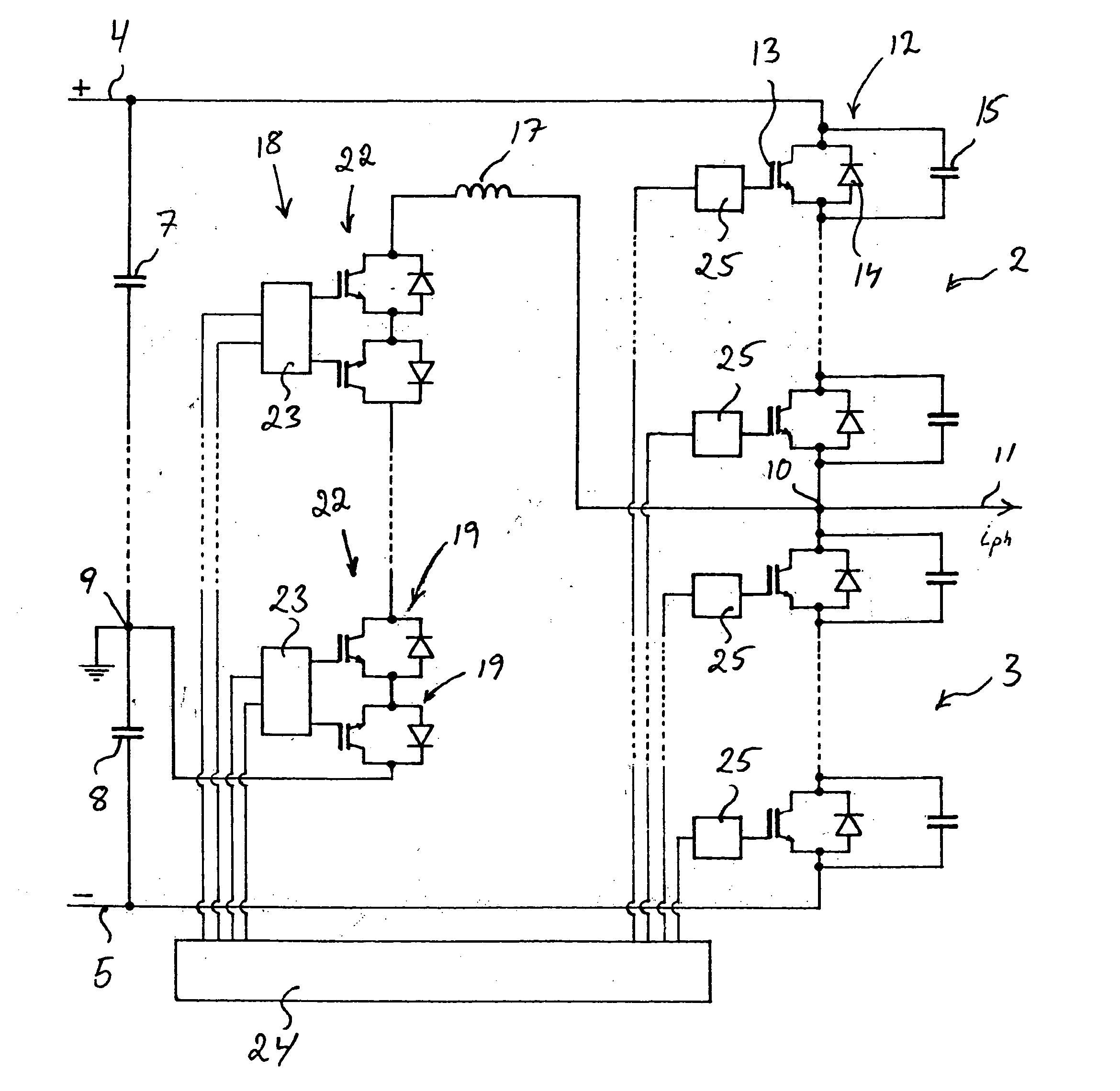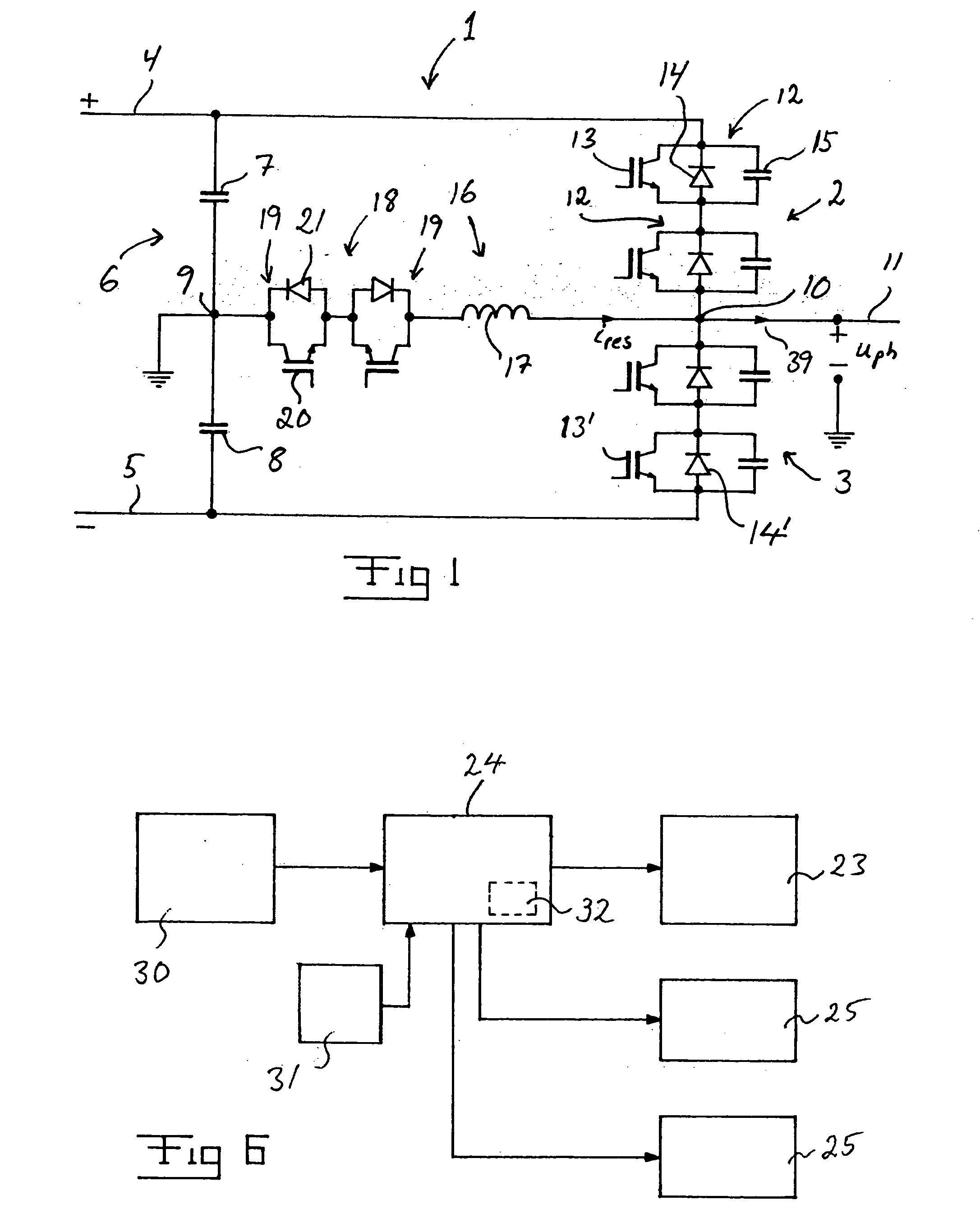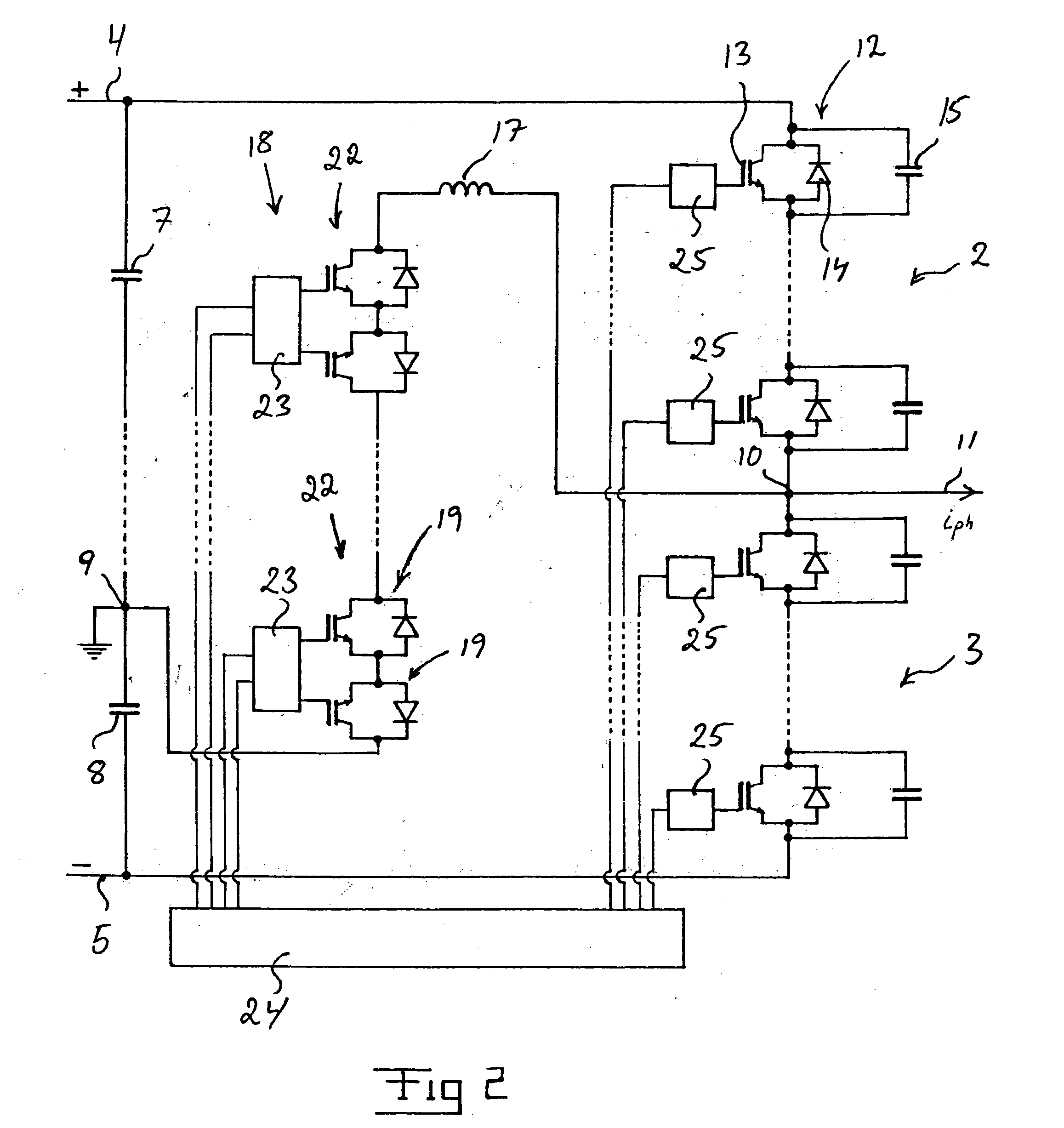Converter and a method for the control thereof
a converter and control method technology, applied in the direction of dc-ac conversion without reversal, process and machine control, instruments, etc., can solve the problems of slow commutation and restrict the maximum modulation degree, and achieve the maximum modulation or control degree of the converter, improve the curve shape, and reduce the loss of voltage time area during the two commutation processes.
- Summary
- Abstract
- Description
- Claims
- Application Information
AI Technical Summary
Benefits of technology
Problems solved by technology
Method used
Image
Examples
Embodiment Construction
[0025] A converter according to an embodiment of the invention is illustrated in FIG. 1. The converter is a so-called VSC-converter. Only the part of the converter connected to one phase of an alternating voltage phase line is shown in FIG. 1, in which the number of phases is normally three, but it is also possible that this constitutes the entire converter when this is connected to a one phase alternating voltage network. The part shown of the converter constitutes a so called phase leg and a converter adapted for for example a three phase alternating voltage network comprises three phase legs of the type shown.
[0026] VSC-converters are known in various embodiments. A VSC-converter comprises in all embodiments a number of so called current valves, hereinafter called main valves, which each comprises a controllable semiconductor device, such as an IGBT (Insulated Gate Bipolar Transistor) or a GTO (Gate Turn-Off Thyristor), and a rectifying member in the form of a diode, a so called ...
PUM
 Login to View More
Login to View More Abstract
Description
Claims
Application Information
 Login to View More
Login to View More - R&D
- Intellectual Property
- Life Sciences
- Materials
- Tech Scout
- Unparalleled Data Quality
- Higher Quality Content
- 60% Fewer Hallucinations
Browse by: Latest US Patents, China's latest patents, Technical Efficacy Thesaurus, Application Domain, Technology Topic, Popular Technical Reports.
© 2025 PatSnap. All rights reserved.Legal|Privacy policy|Modern Slavery Act Transparency Statement|Sitemap|About US| Contact US: help@patsnap.com



